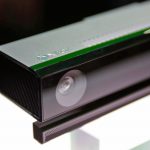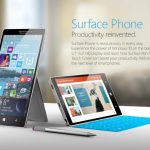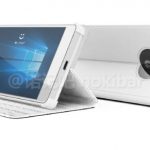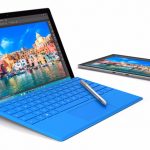Beyond HoloLens: Microsoft Will Offer Windows Holographic To Other Hardware Makers
From the time it was announced in January 2015, Windows Holographic has been a bit of an outlier: a Microsoft operating system that, as far as we knew, was designed to run on a single piece of hardware. That hardware would be HoloLens, the company’s upcoming “mixed reality” headset, which blends the real world with digital imagery for applications ranging from games to workplace collaboration.
But at its keynote at the Computex conference in Taipei, Microsoft is announcing that its aspirations for Windows Holographic only begin with HoloLens. The company will offer Windows Holographic—which is a version of Windows 10 with extra features such as the ability to detect objects in the real world, interleave them with digital imagery, and accept input in the form of gestures you make in the air—to third-party hardware manufacturers. It envisions the software being used for an array of devices involving augmented reality, virtual reality, or realities that fall somewhere in between.
Among the companies that are on board as part of the effort, without announcing any specifics, are Intel, AMD, Qualcomm, HTC, Acer, Asus, Dell, HP, and Lenovo. “We’re going to push HoloLens forward,” says Microsoft’s Windows chief Terry Myerson. Other manufacturers will offer “different form factors, price points, and distribution models.”
Microsoft produced a video to convey its vision of the sort of experiences that Windows Holographic is designed to enable, such as VR that’s about interacting with other people rather than solitude. (And yes, unlike some past HoloLens promotion, this video is all vision, not an alleged demo of what Windows Holographic is capable of doing right now.)
A Familiar Game Plan
Myerson told me that Microsoft planned all along to open up Windows Holographic to other manufacturers, a move that will bring the software in line with Windows’ historic business model of being available on as many devices as possible. “Every Windows 10 PC will include Windows Holographic,” he says. Among other things, that opens up scenarios in which a Windows PC provides most of the computational muscle for an AR or VR headset, just as Facebook’s Oculus Rift and HTC’s Vive require a PC. (HoloLens, by contrast, is essentially a Windows PC you can strap to your head, which helps explain why the developer version, the only variant that’s shipped, costs $3,000.)
Microsoft offering its own high-end Windows Holographic hardware in the form of HoloLens while also licensing the software to others also sounds a lot like what it has done with its Surface convertible tablets, which have sold well while simultaneously providing inspiration for competing two-in-one PCs, a bright spot during an era of doldrums for the PC industry. The more Windows Holographic devices that ship, the more likely developers are to bolster Microsoft’s ecosystem by writing ambitious apps that take advantage of its AR/VR capabilities, which means that competitive hardware could help HoloLens in the market rather than hurt it.
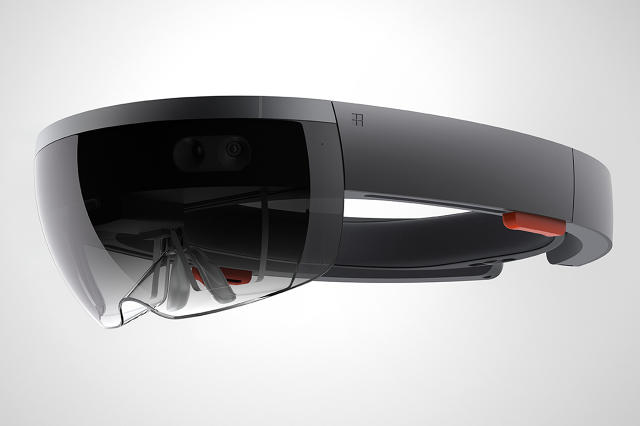
Besides being quintessentially Microsoftian, the strategy for Windows Holographic is also distinct from the bets other companies are making in augmented and virtual reality. Oculus licensed some of its technology to Samsung for the Gear VR headset, but doesn’t appear to want dozens or hundreds of hardware partners. Google’s Daydream is a VR platform that involves a Google headset as well as those from third parties, but it doesn’t seem to be aiming for the same Swiss Army-like versatility that Microsoft hopes to achieve with Windows Holographic. AR mystery company Magic Leap appears to be building something that tightly integrates its own hardware and software. And unlike Microsoft, most companies are focusing on either AR or VR rather than tackling both types of experiences, at least for now.
“I don’t think anyone else has expressed as complete an ambition and vision for mixed reality,” says Myerson.
If you’re itching to give Microsoft a score for its AR/VR work, today’s news resets the clock. Even when HoloLens ships in its consumer incarnation—and Microsoft hasn’t yet set a date—it will represent only one piece of the company’s work in the field. And not just release dates but everything about third-party Windows Holographic hardware remains unknown. (Microsoft says it’ll have more to say at WinHEC conferences in Taipei and Shenzhen this fall.)
Once Windows Holographic gadgets arrive, Microsoft’s investment in AR and VR, if it’s going to pay off, will need to be a long-term one, involving multiple generations of software and hardware, plus a concerted, ongoing effort to get developers, hardware makers, and consumers excited about both the technology in general and the company’s approach to it in particular. “We have years of exciting conversations to come,” Myerson says.
Related Video: The brand evolution of Microsoft
Fast Company , Read Full Story
(19)



